Spotless Starling, Zwarte Spreeuw, Einfarbstar, Estorninho-preto, Estornino Negro
Spotted at Monte Horizonte in the Alentejo region of Portugal. Spotless Starling sound
The Spotless Starling Sturnus unicolor is a passerine bird in the starling family Sturnidae. It is closely related to the Common Starling S. vulgaris, but has a much more restricted range, confined to the Iberian Peninsula, northwest Africa, southernmost France, and on the islands of Sicily, Sardinia and Corsica. It is largely non-migratory.
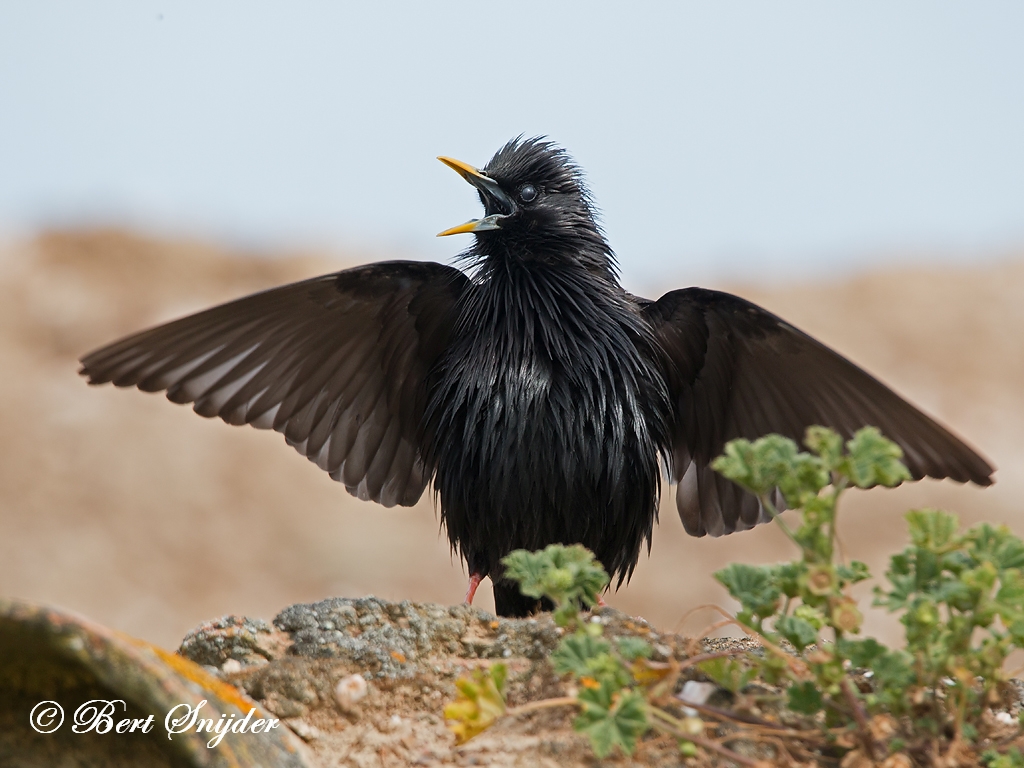
More photos at the bottom of this page.
The adult Spotless Starling is very similar to the Common Starling, but marginally larger (21–23 cm length; 70–100 g weight), and has darker, oily-looking black plumage, slightly purple- or green-glossed in bright light, which is entirely spotless in spring and summer, and only with very small pale spots in winter plumage, formed by the pale tips of the feathers. It also differs in having conspicuously longer throat feathers (twice the length of those on Common Starlings), forming a shaggy ‘beard’ which is particularly obvious when the bird is singing. Its legs are bright pink. In summer, the bill is yellow with a bluish base in males and a pinkish base in females; in winter, it is duller, often blackish. Young birds are dull brown, darker than young Common Starlings, and have a black bill and brown legs. Confusion with the Common Starling is particularly easy during the winter when Common Starlings are abundant throughout the Spotless Starling’s range, but also in summer where their breeding ranges overlap in northeastern Spain and the far south of France. It can also be confused with the Common Blackbird Turdus merula, which differs most obviously in its longer tail and lack of plumage gloss.
Like the Common Starling, it walks rather than hops, and has a strong direct flight, looking triangular-winged and short-tailed. It is a noisy bird, and a good mimic; its calls are very similar to the Common Starling’s, but are louder.
The Spotless Starling uses a wide range of habitats, and can be found in any reasonable open environment from farmland and olive groves to human habitation. The highest population densities are in open grazed Holm Oak woods, and in urban habitats such as Gibraltar, where it is common. The population has grown in recent decades with a northward expansion in range, spreading to the whole of Spain (previously absent from the northeast) between 1950–1980, and colonising locally along the south coast of mainland France since 1983. Like its commoner relative, it is an omnivore, taking a wide variety of invertebrates, berries, and human-provided scraps. It is gregarious, forming sizeable flocks, often mixed with Common Starlings, of up to 100,000 in winter.
Like most starlings, it is a hole-nesting species, breeding in tree holes, buildings and in cliff crevices. It typically lays three to five eggs.

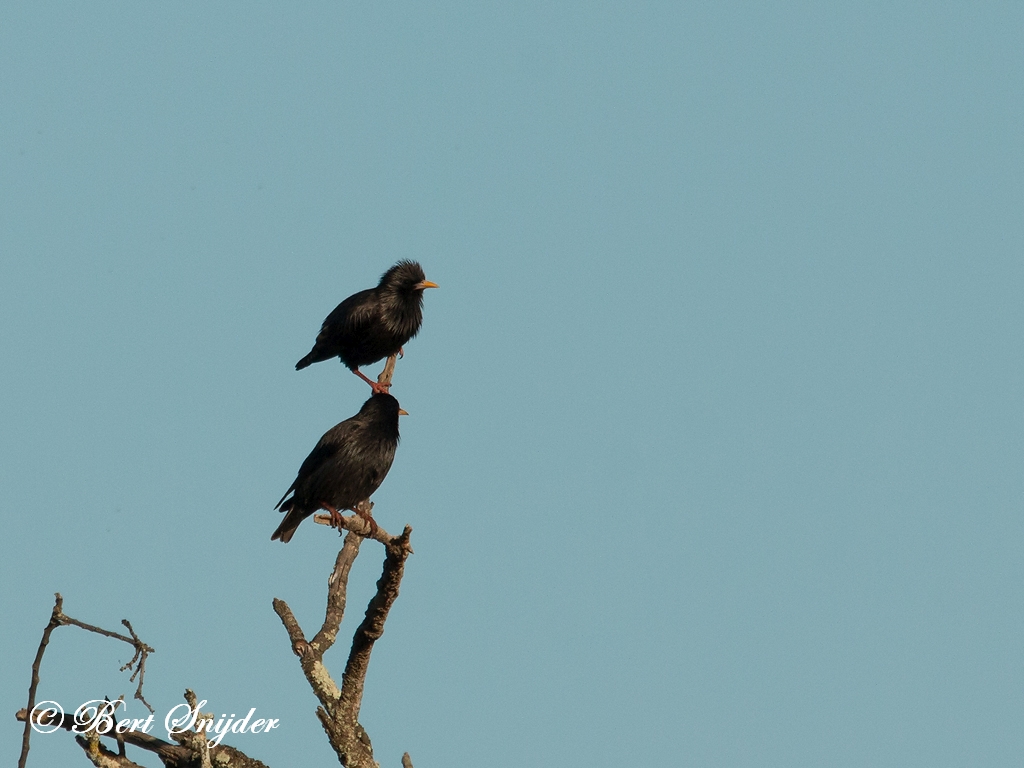
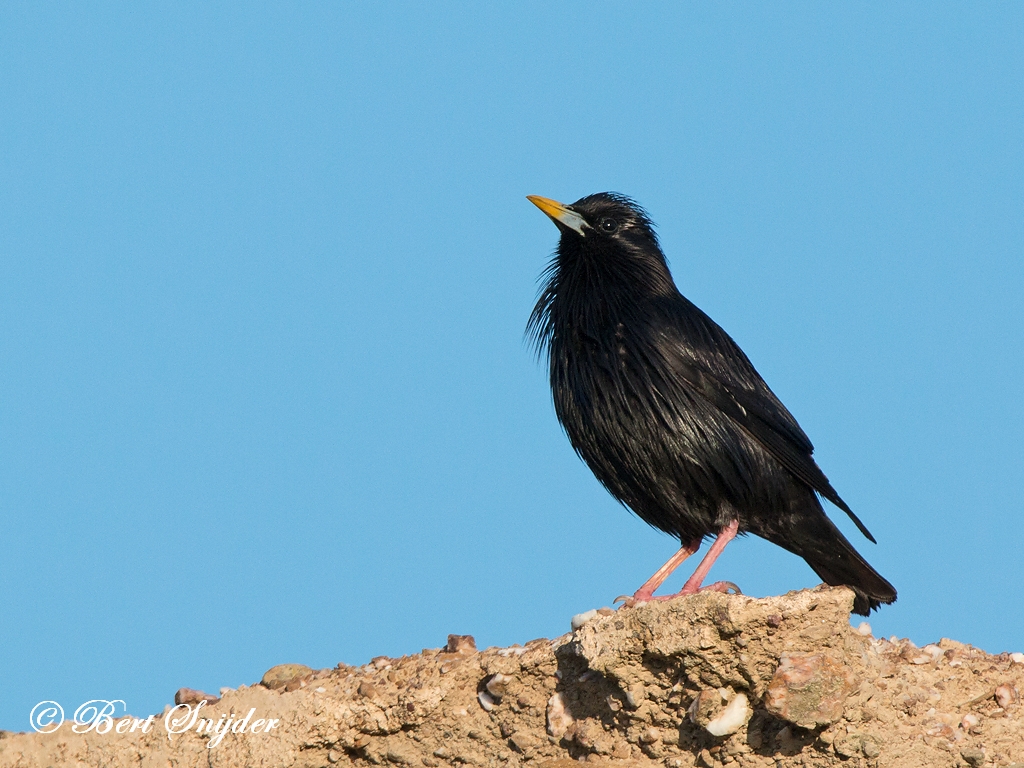
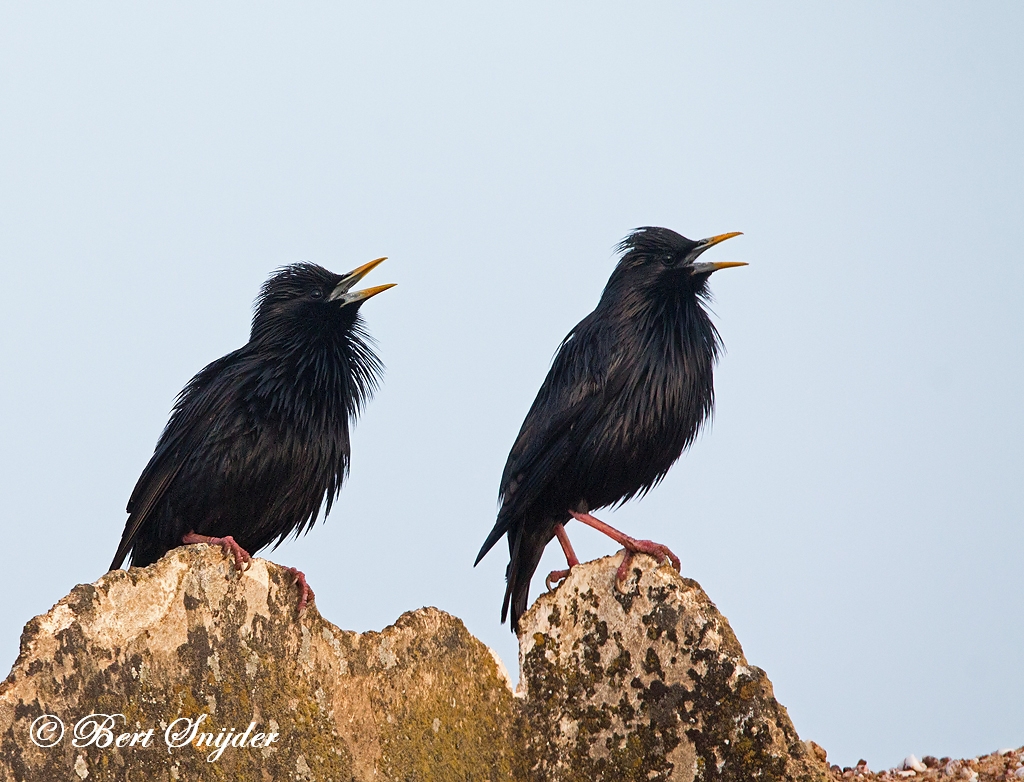
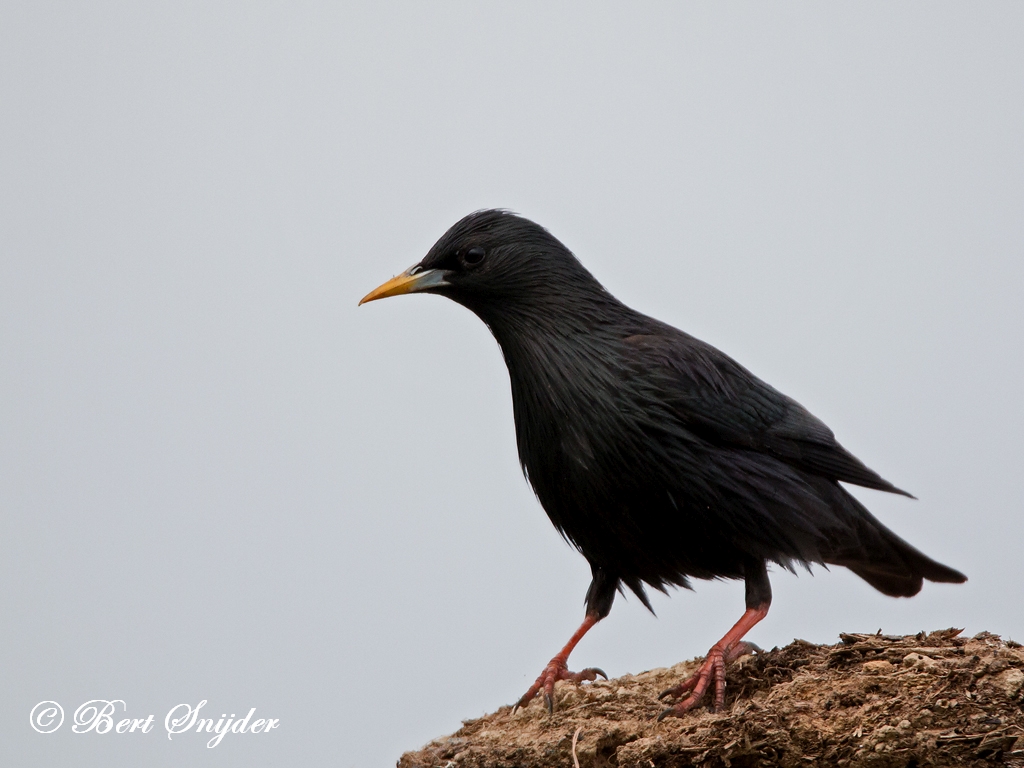
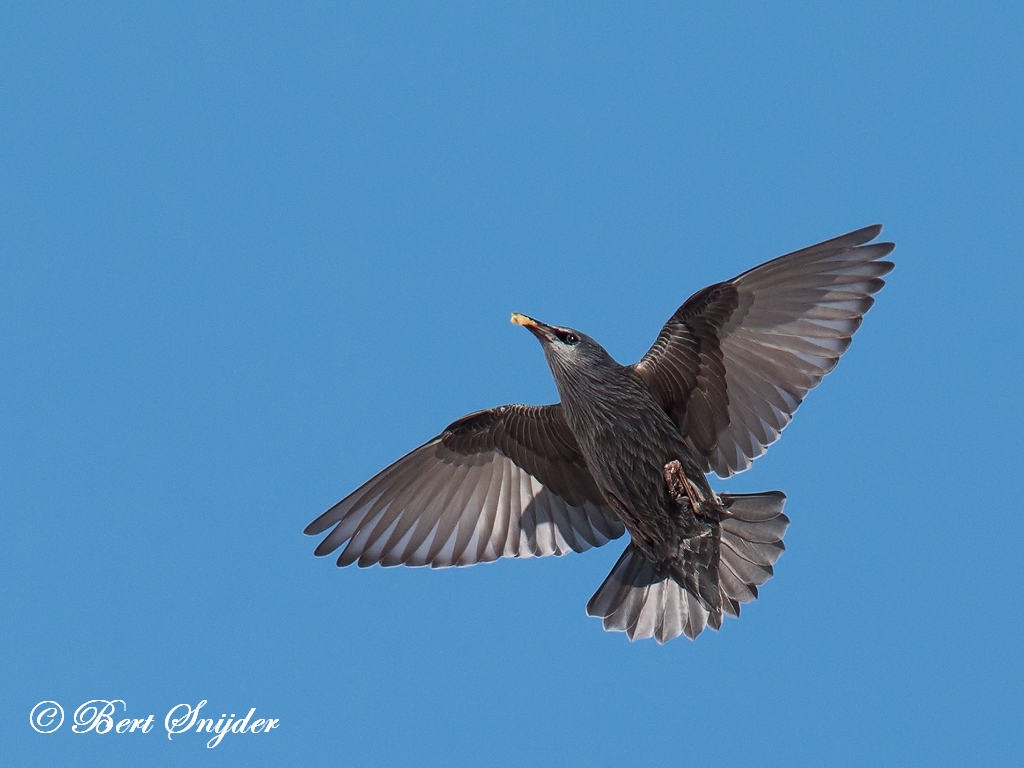
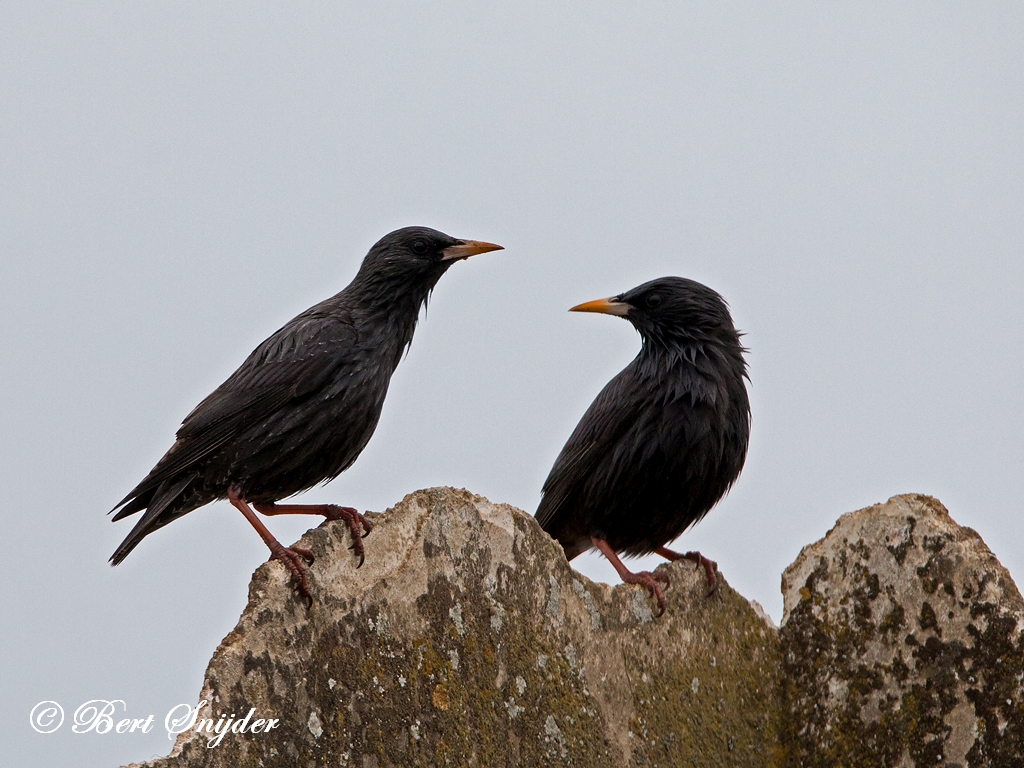
Other synonyms:
Asturian: Estornín
Catalan: Estornell negre
Catalan (Balears): Estornell negre
Danish: Ensfarvet Stær
German: Einfarbstar
Greek: ???????????
English: Black Starling, Mediterranean Starling, Sardinian Starling, Spotless Starling
Spanish: Estornino Negro
Estonian: ibeeria kuldnokk
Basque: Araba zozo beltza, Estornell negre
Finnish: Kustakottarainen, Mustakottarainen
French: Etourneau unicolore, Étourneau unicolore
Galician: Estornell negre , Estorniño negro
Icelandic: Gljástari
Italian: Storno nero
Japanese: mujihoshimukudori
Latin: Sturnus uniaolor, Sturnus unicolor
Maltese: Sturnell Iswed
Dutch: Zwarte Spreeuw
Norwegian: Middelhavsstær
Polish: szpak jednobarwny
Portuguese: Estorninho, estorninho preto, Estorninho-preto
Slovak: Ékorec jednofarebný, škorec jednofarebný
Slovenian: crni škorec
Swedish: Svart stare, Svartstare
Travel Birdwatching Holiday Alentejo, Birding Holiday Portugal for birders to see birds on your trip.